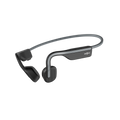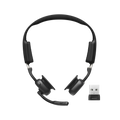How brand ambassadors can change the game
By Bruce Borenstein, President and CEO, AfterShokz

For a startup accessory brand, the phrase “small but mighty” can feel more like an oxymoron than an inspiring operation. While being lean has its advantages, it also means you have to get creative with your resources. And when it comes to growth, the million-dollar question is: what’s the secret to scaling up efficiently and cost effectively?
AfterShokz’ secret weapon has been our superfans, a growing army of brand ambassadors we refer to as “ShokzStars”. Through them, we’re exponentially increasing our social footprint without a substantial financial investment. Here’s how ShokzStars made a brand ambassador program work for us.
Use Real Customers
Selecting members for your brand ambassadors program who have made a conscious effort to purchase your product or service will help to eliminate any potential bias. At AfterShokz, we believe you can’t genuinely influence others unless you have walked in their shoes – in this case, as a valued customer. It’s a bonus that actual customers are also more likely to already understand the value your brand offers and won’t need to be “trained.” Start with a small group -no more than 10 – so direct communication is manageable.
Roll Out the Red Carpet
Brand influencers should be afforded celebrity status in your book. Give them the attention they deserve, starting with an open line of communication to decision makers. One of your company goals should be to learn from these folks, so make it easy for them to share their ideas. The VIP treatment shouldn’t end there - Get your latest and greatest developments into their hands as early as possible. While your internal company purpose may be beta testing a new product, any feedback is critical – and the ambassadors will consider the opportunity to evaluate that product as a perk.
Stay in Touch Regularly
Consistent communication ensures your brand remains top-of-mind and allows your ambassadors to anticipate outreach, so they can set aside enough time to handle tasks associated with providing critical product feedback. Your brand ambassadors should know what you’re doing and when, from events to strategic planning, as you never know where they’ll be able to add value. You can even try taking it one step further and connecting them to one another. Providing a forum for sharing experiences will give way to big ideas.
Help Them be Heroes
Their vocality should be rewarded. As unpaid solicitors, these passionate customers deserve the tools to drive eyes to your brand. Load them up with branded goodies they can give away as they see fit. Give them personal discounts on your products or services that they can gift to family and friends. They may share their passion with their networks anyway, but feeling appreciated with this extra bit of ammo has always given way to positive interaction for the ShokzStars. If you offer value to these influencers, they’ll repay you by helping your brand expand your reach to places you’ve never been before. When these superfans take to social media and become a brand resource, they’re planting deep roots within their local and online communities for your brand. These roots will continue to grow your customer and fan base for years to come.
Overall, the key ingredient for building a successful ambassador program is a group of product advocates who’ve shared their passion with you, developed relationships with your team and community, and been equipped with everything they need to flourish. Once you’ve found those exceptional fans who want nothing more than to see your brand grow and succeed, grab them, and don’t let them go!
If you get this recipe just right, sit back and watch the brand take off. Your marketing tree just grew a few branches, and now you can focus your limited resources on other areas of the business. Now, there you have it, you’ve built an army on a budget!
Note: This article was originally published in the April 2016 issue of Dealerscope.











